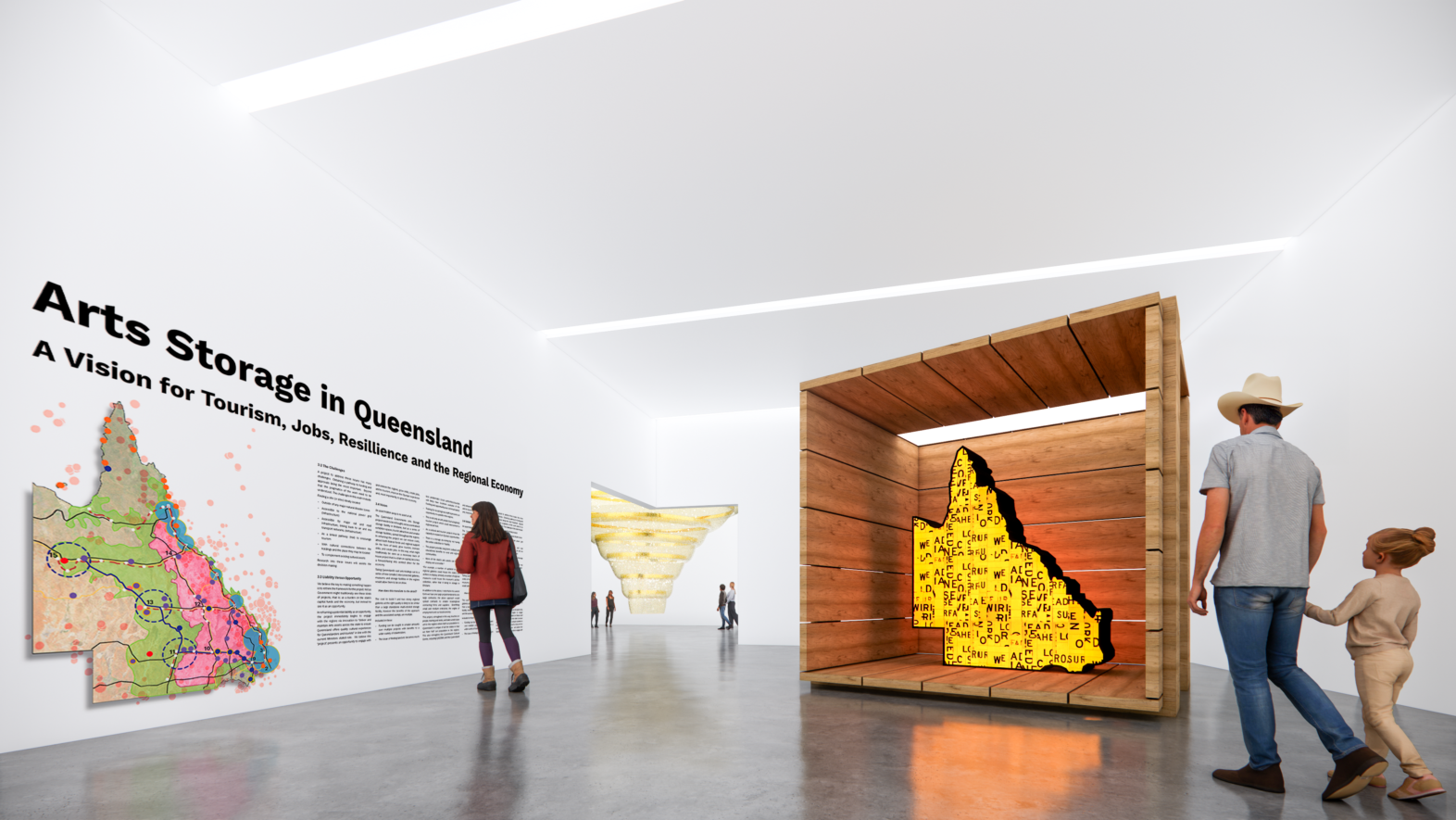
A Queensland Art Trail
The arts are for all Queenslanders. An asset hidden away is no asset at all.
Background
The Queensland Cultural Centre (located on the flood prone Kurilpa Peninsula) holds more than $1 billion worth of irreplaceable items of artistic, scientific, and cultural significance. A much larger (growing) collection, in storage, is in need of an upgraded, secure and disaster proof storage solution. The current proposal for a centralised Brisbane based storage facility was first mooted in 2011-12 and slated for completion within a decade. Having been on the table for close to 15 years, three flood events later, no site has been secured and no construction funding allocated.
We believe the key to making something happen is to rethink the framework for the project. Not as Government might traditionally see these kinds of projects, that is; as a burden on the state’s capital funds and the economy, but instead to see it as an opportunity.
In reframing a potential liability as an opportunity, the project could be allowed to engage with a wider audience, bringing it in line with the current Ministers stated role.
That is.
“…deliver and maintain Arts assets across the state to ensure Queensland offers quality cultural experiences for Queenslanders and tourists”
Reframing this important project, away from the traditional categorisation of infrastructure requiring lost capital, to an investment opportunity for the regions, tourism, and growth for the economy, sets the basis for this research paper.
Vision/Innovation
The Queensland Governments Arts Storage project needs to be rethought, not as a centralised storage facility in Brisbane, but as a series of exhibition spaces, tourist attractions and smaller storage facilities, spread throughout the regions. In reframing the project we can reduce costs, attract both federal funds and regional support (in the form of land), grow tourism, increase skills, reduce risk, create jobs and free up lost exhibition space in our most important gallery/museum and library spaces.
In this way, what might traditionally be seen as a necessary back of house project that is a drain on capital, becomes a forward-facing, arts-centred driver for the economy.
Taking Queensland’s vast arts holdings out to a series of new (smaller) interconnected storage facilities, galleries, and museums in the regions would allow this project to be staged, reduce the risk inherent in a centralised facility, and allow the assets to be more accessible. Built at a smaller scale, these projects would further stimulate local economies by providing jobs for local contractors and suppliers.
Research
Our research shows that the towns and cities along the A2 National Highway are connected to secure energy infrastructure, are serviced by well-travelled tourist and freight routes, have existing cultural facilities and sit outside of major natural disaster zones, making them ideal for the secure storage and display of Queensland’s assets. Similarly isolating the risk of riverine flooding through good site selection would allow the A6 and A7 Highway link between Roma, Emerald, Charters Towers, Mount Isa and Cloncurry to be part of a larger set of connected regional assets. An Art Trail based around these road systems would provide benefits in the form of increased skills and jobs, expanded tourism networks, further cultural and educational opportunities, an enhanced Olympic experience, a natural staging plan and, most importantly, economic growth.